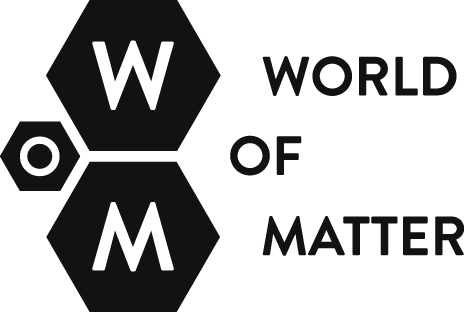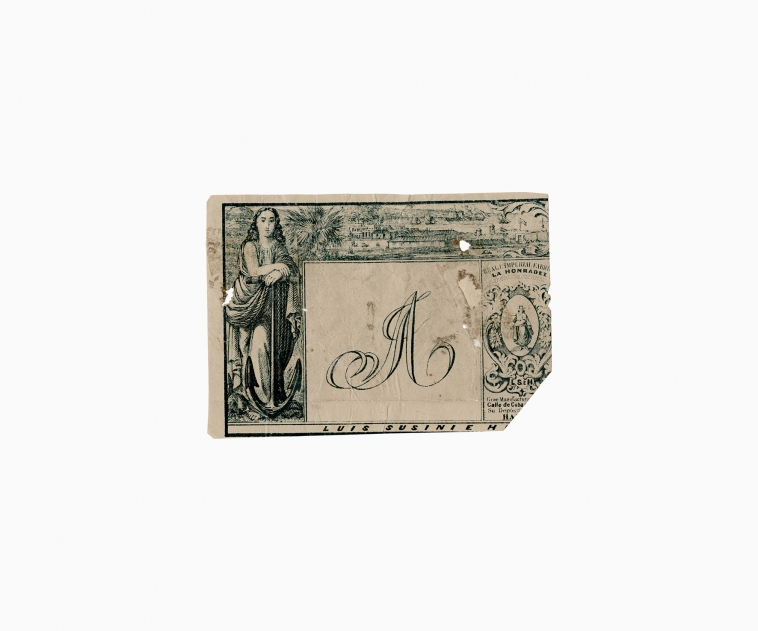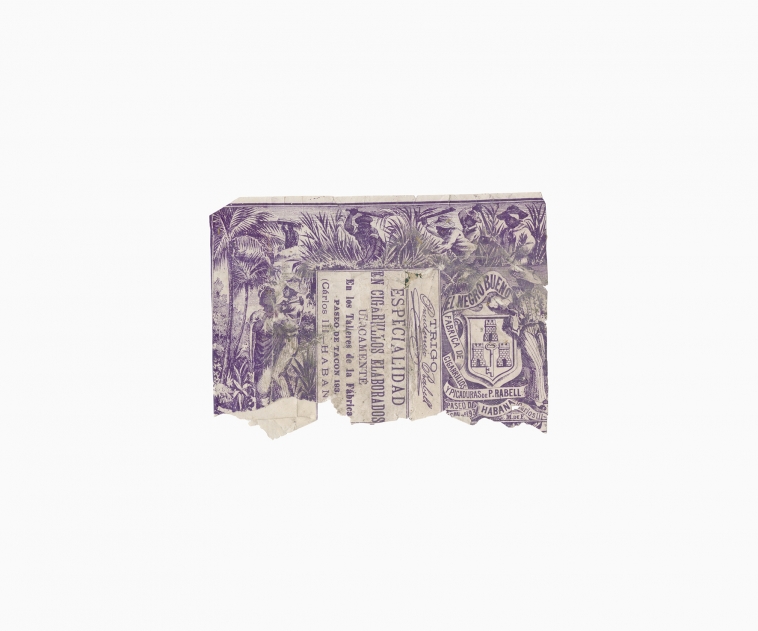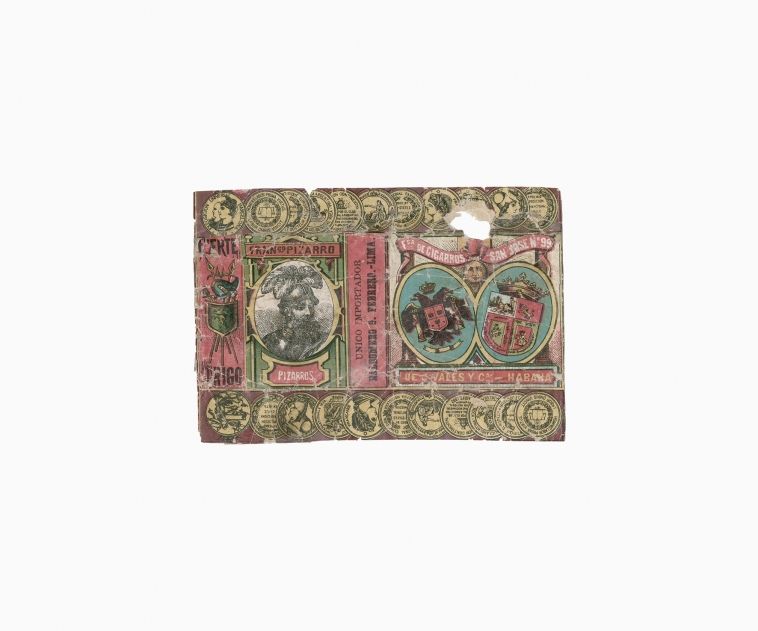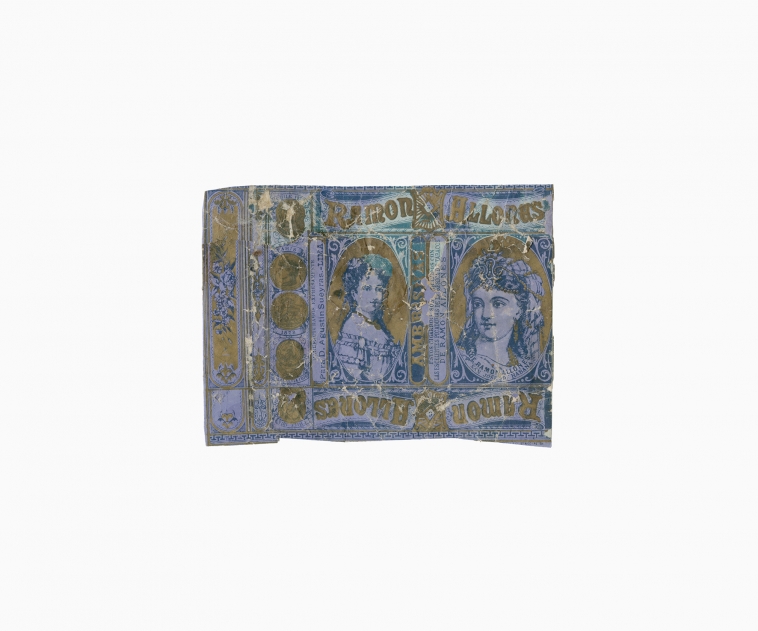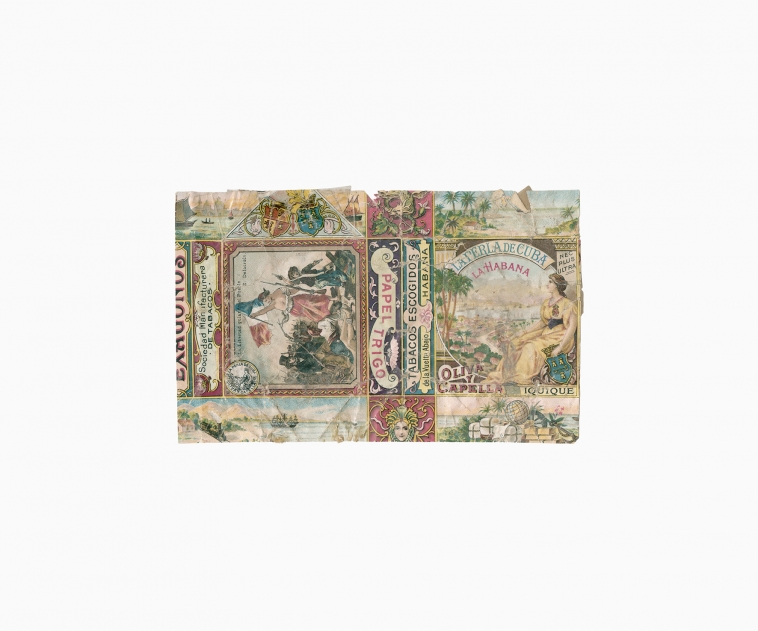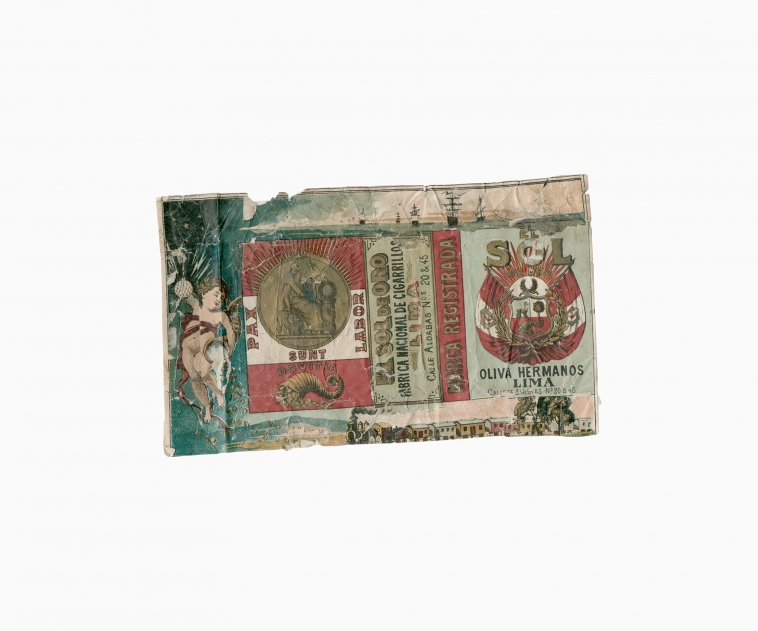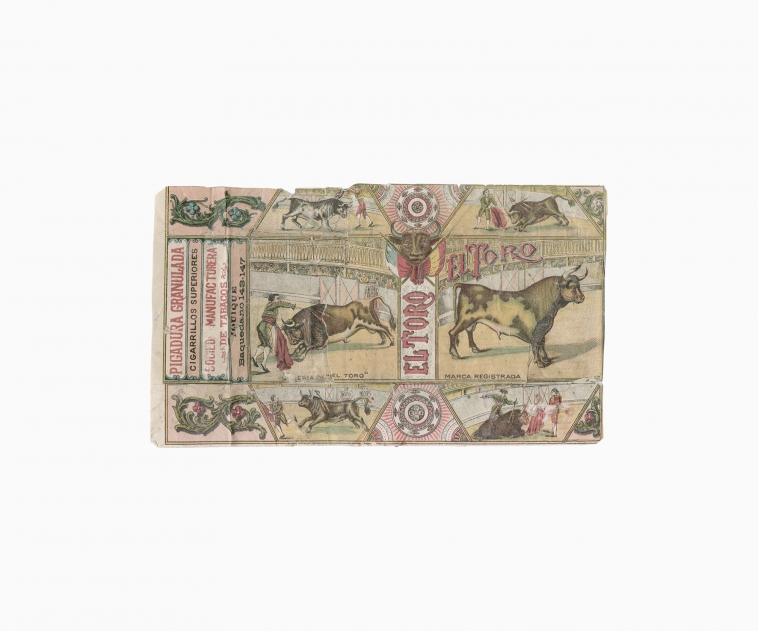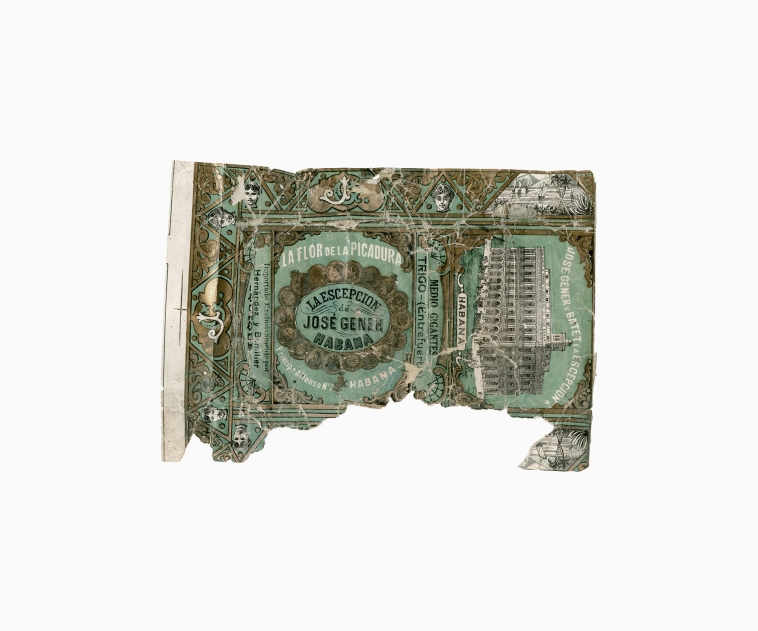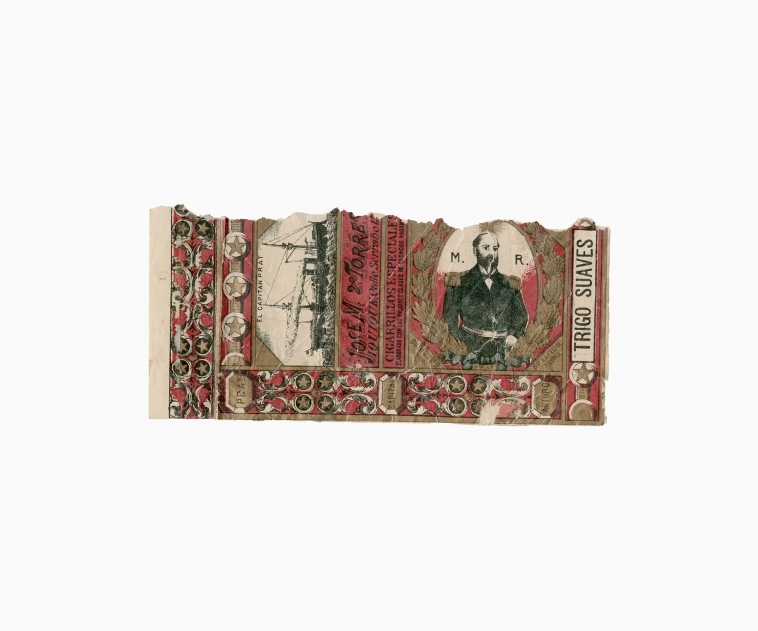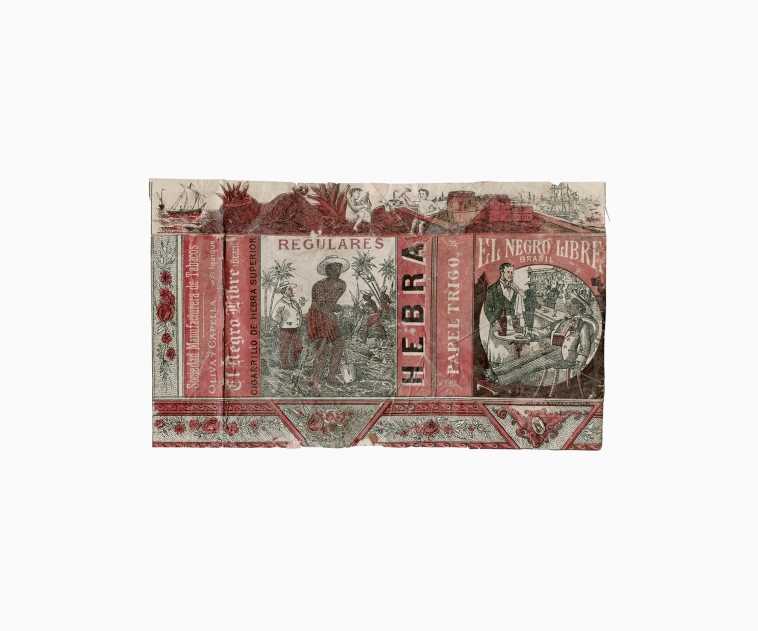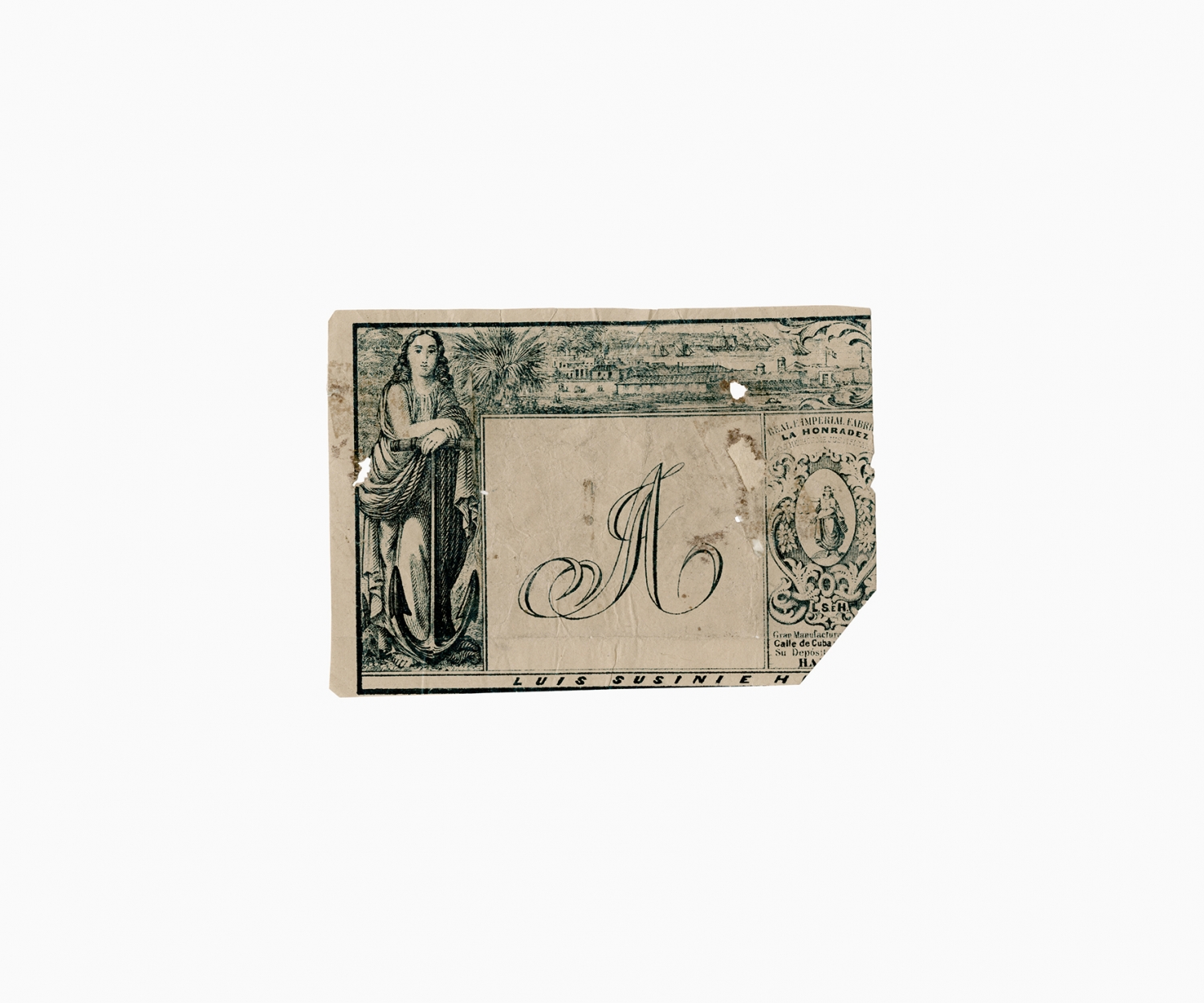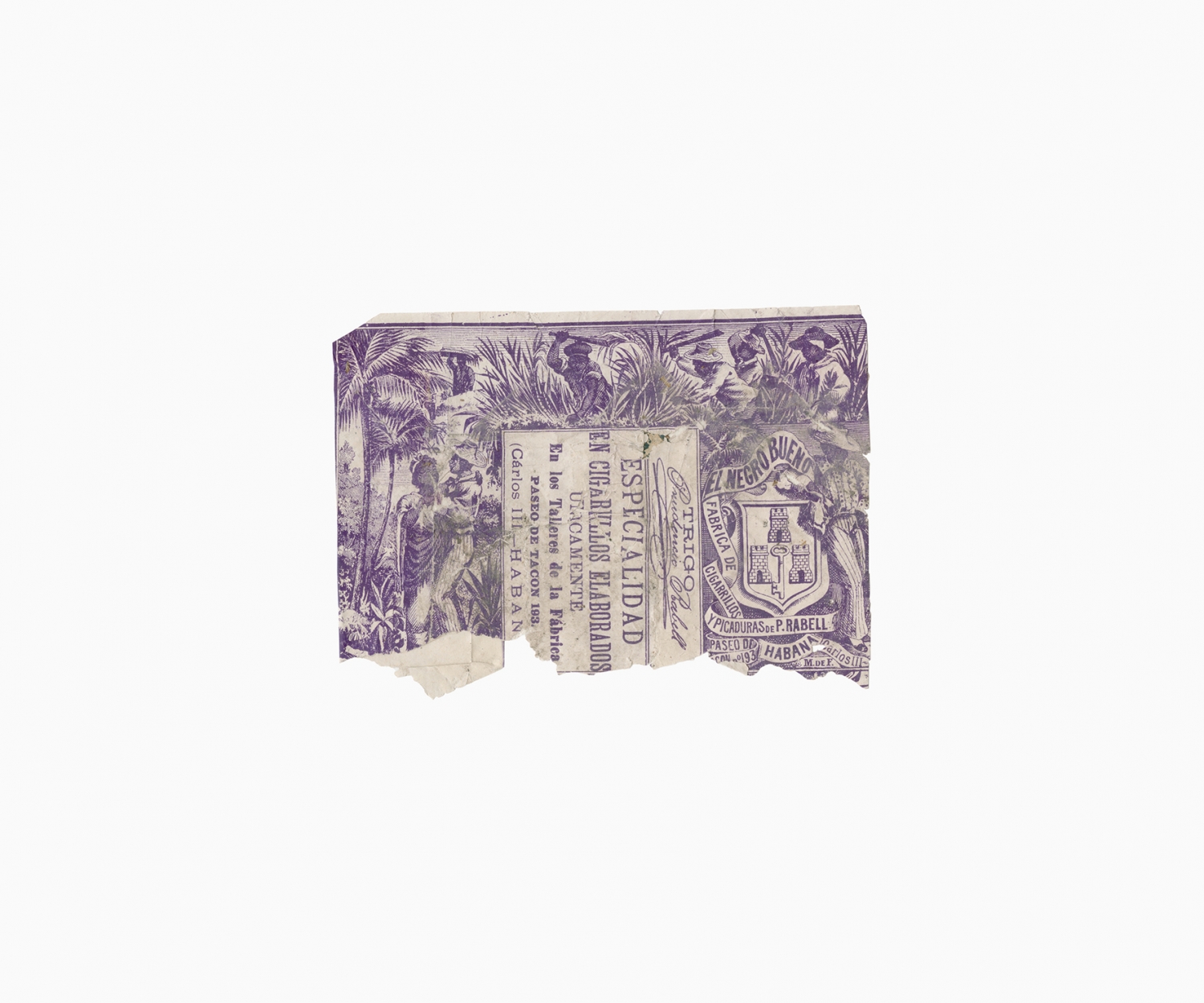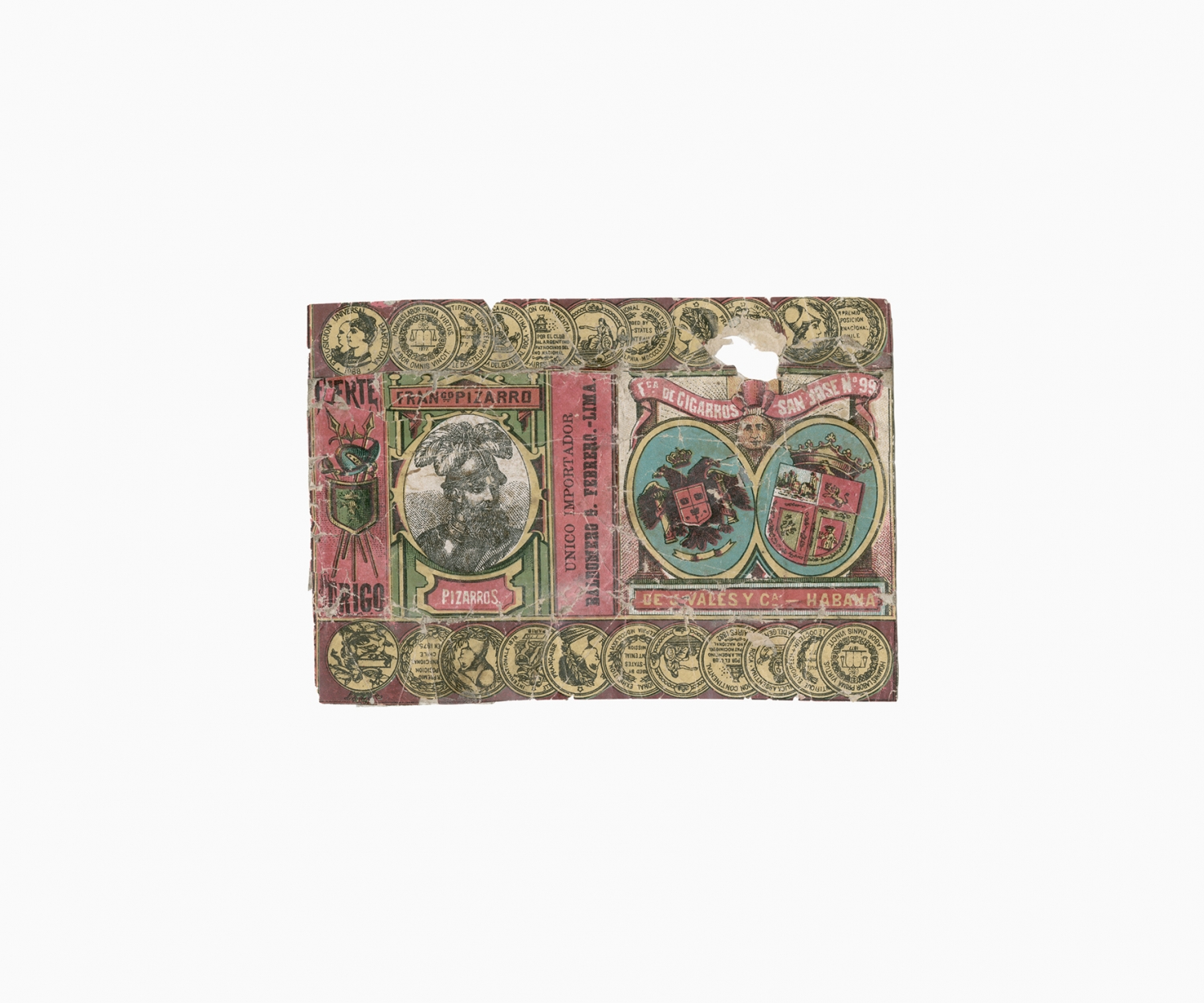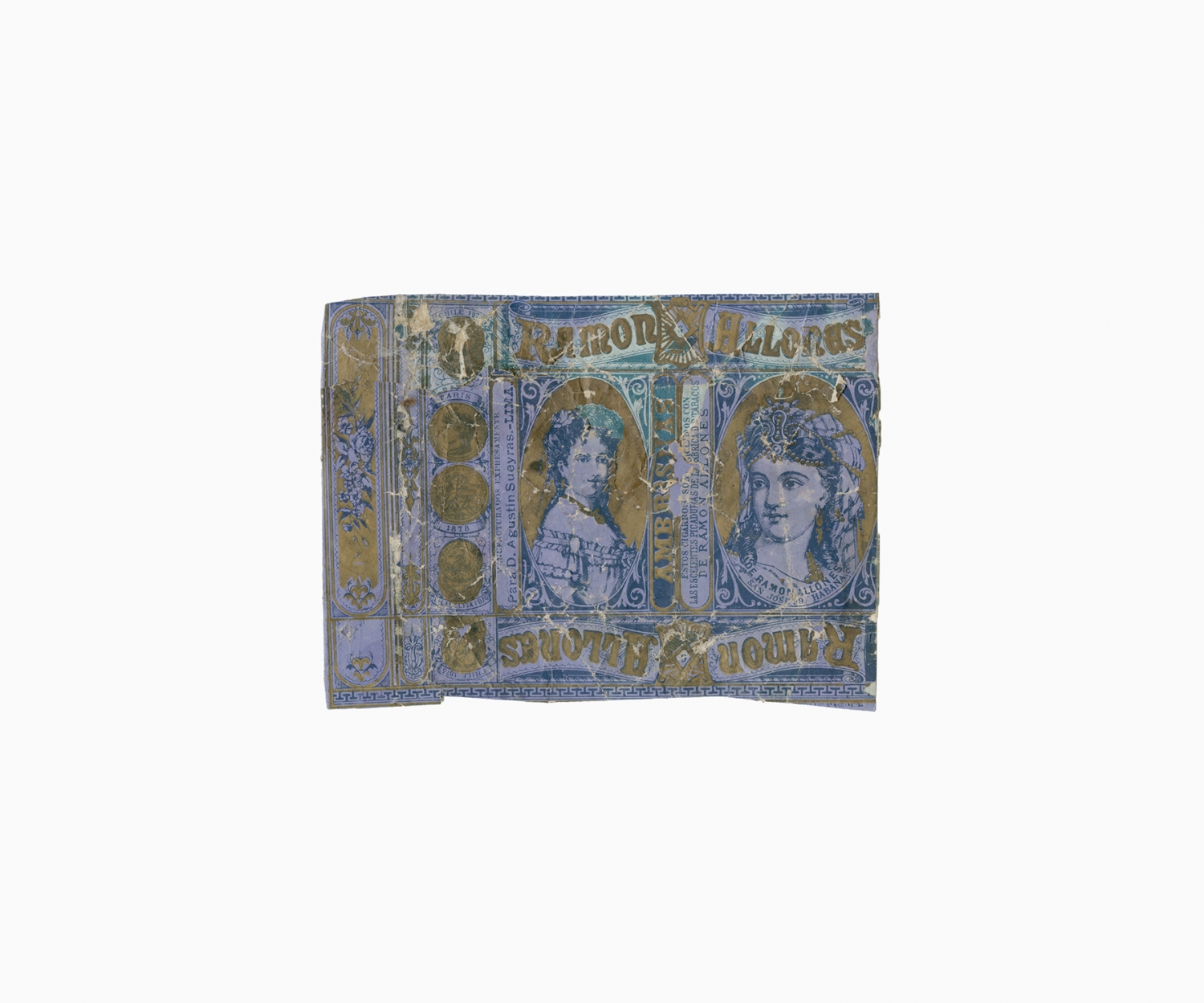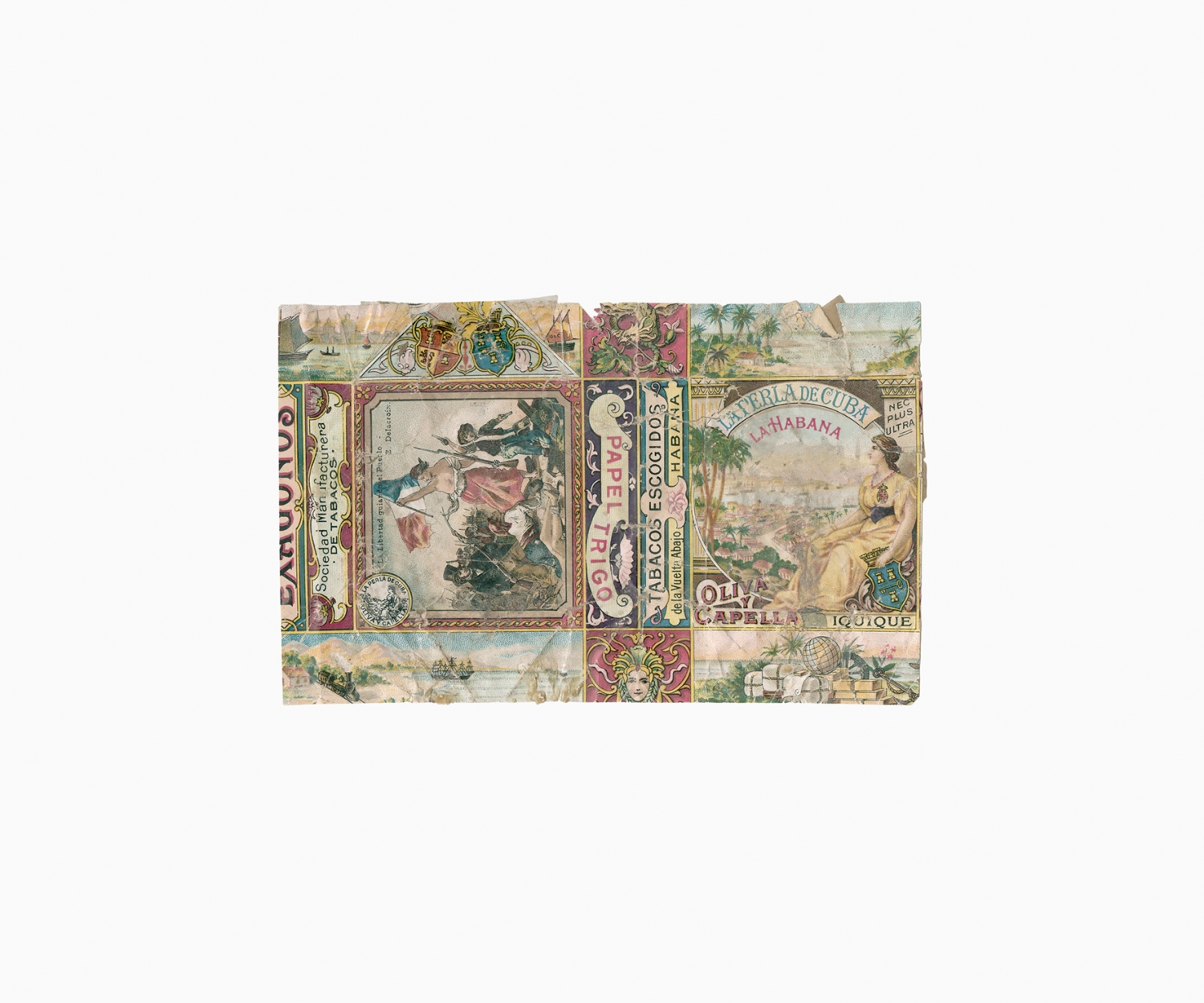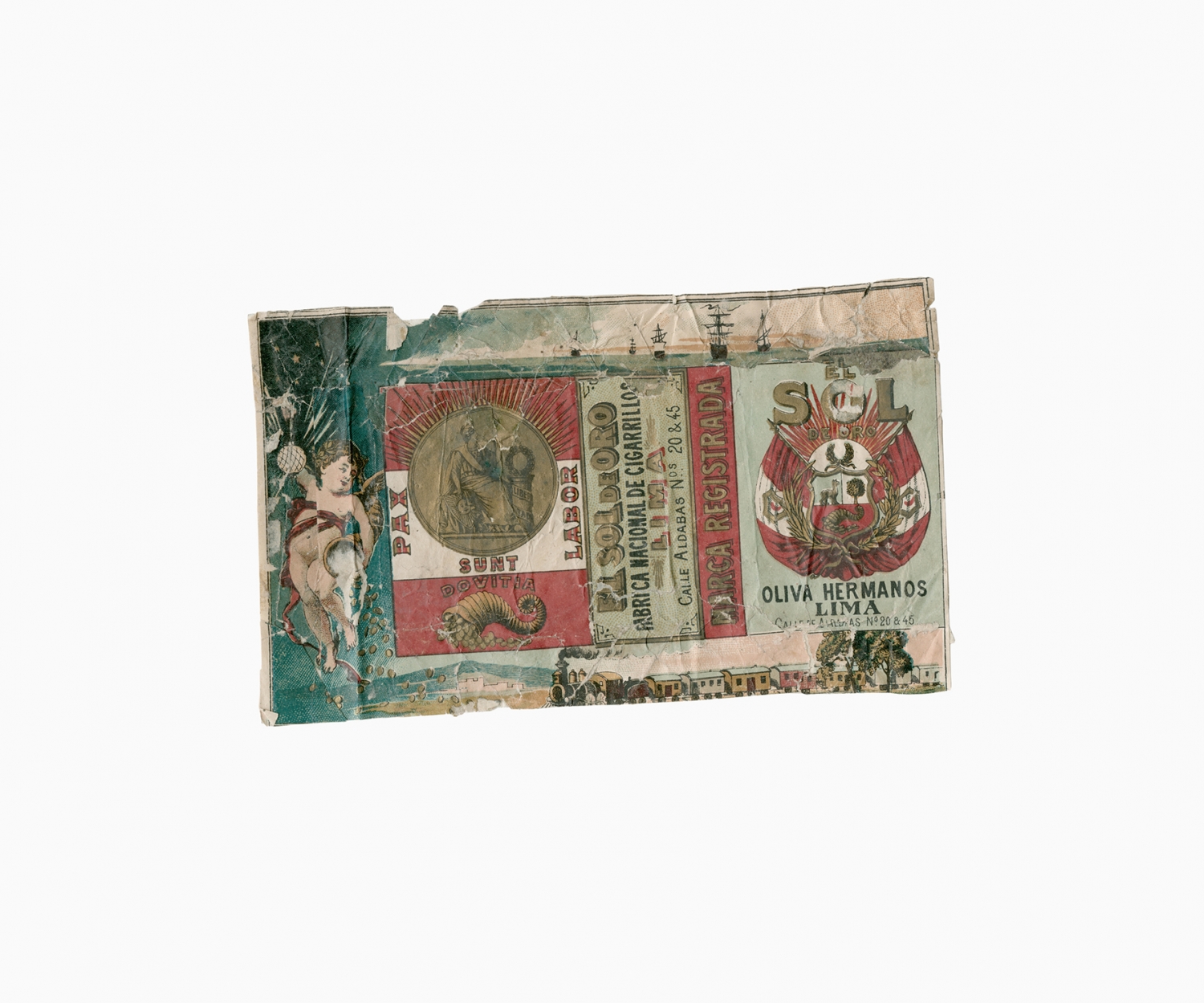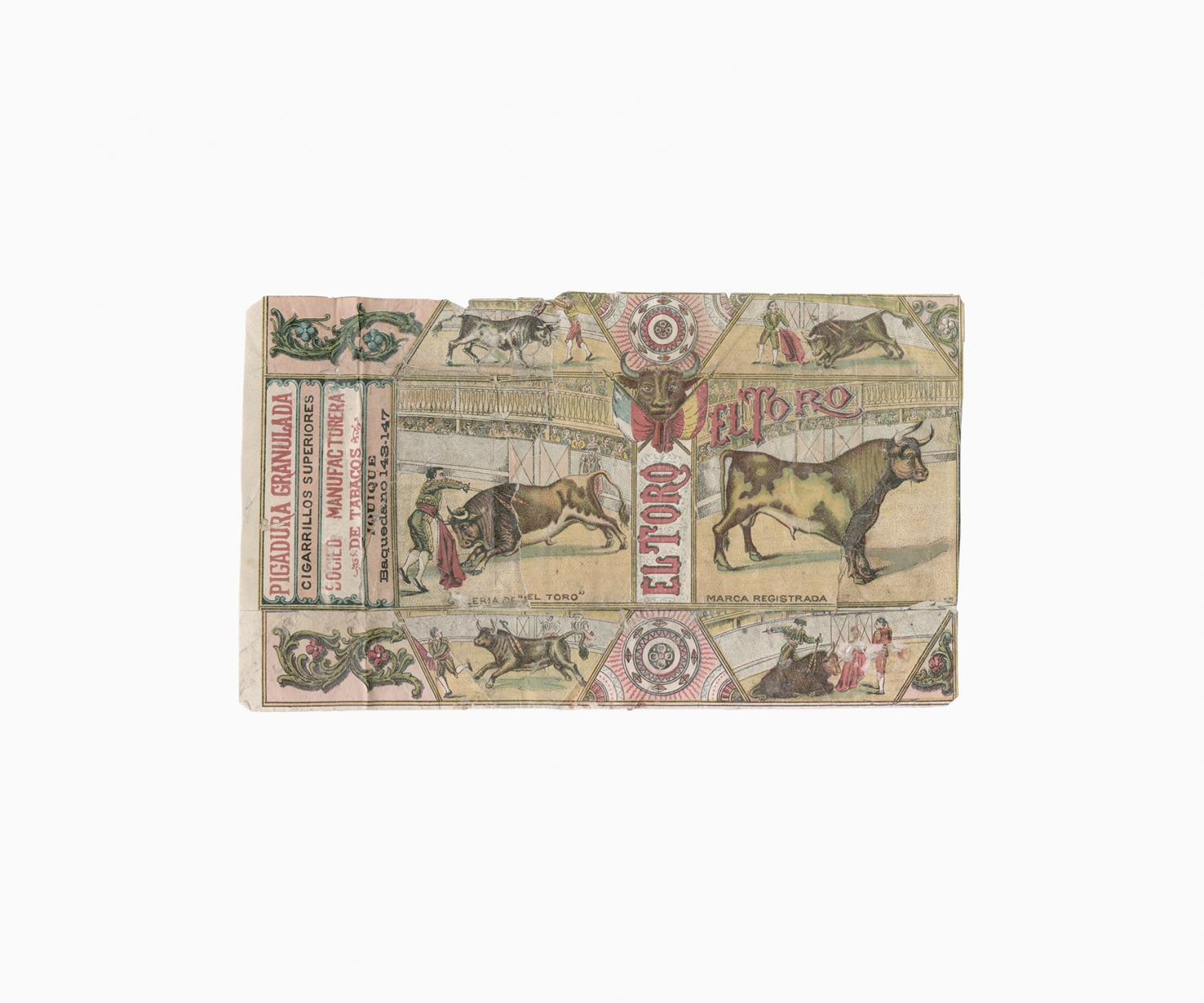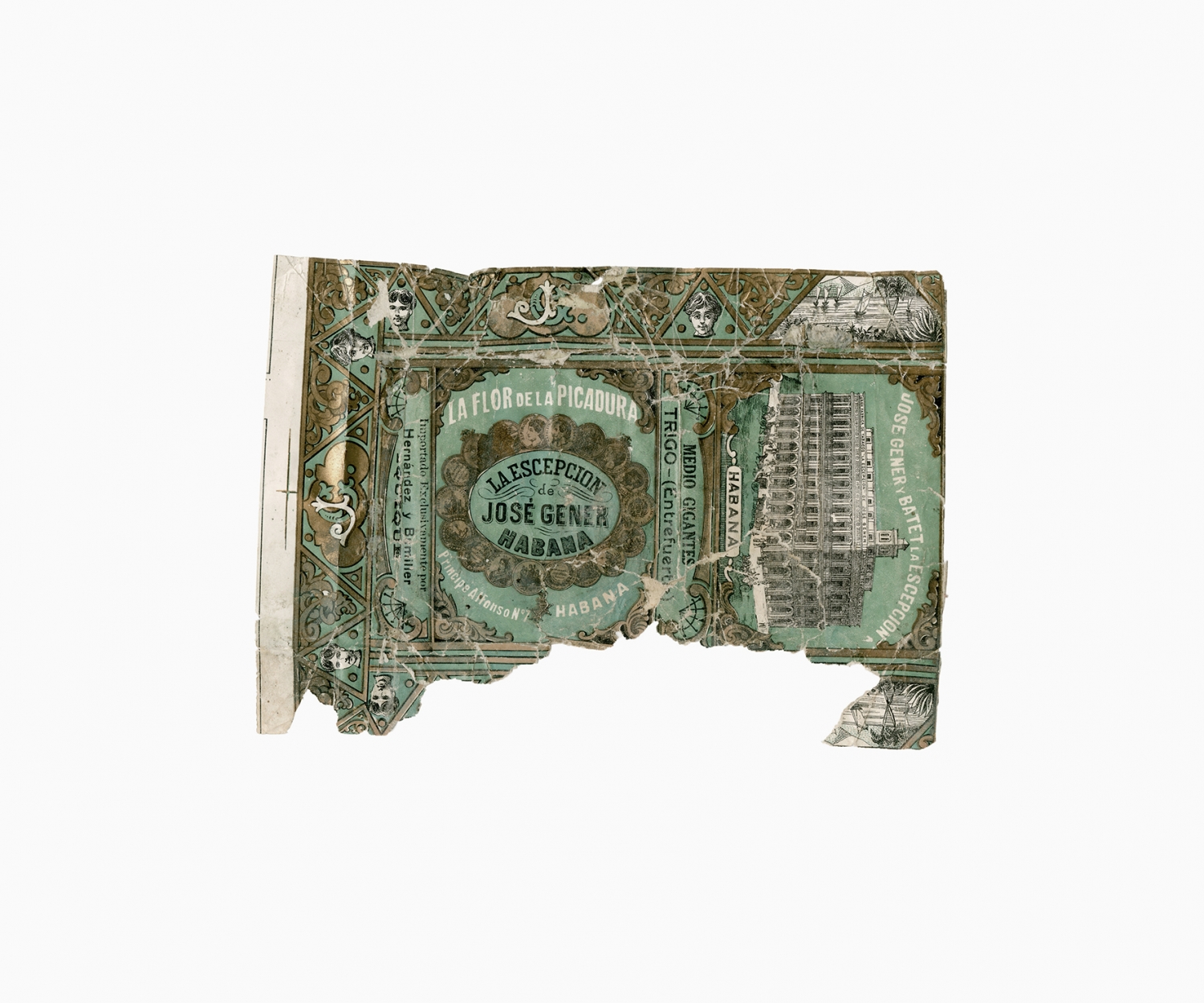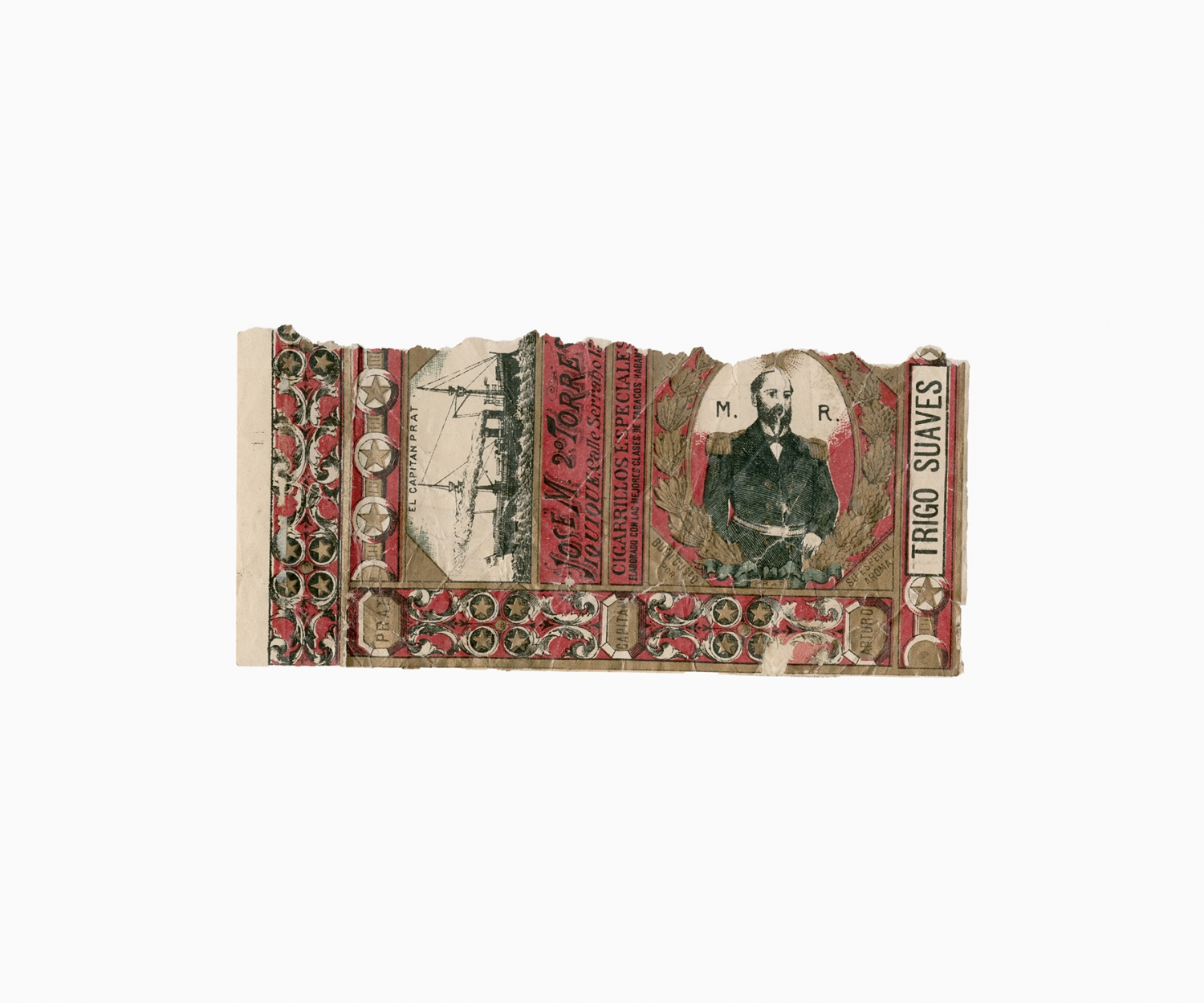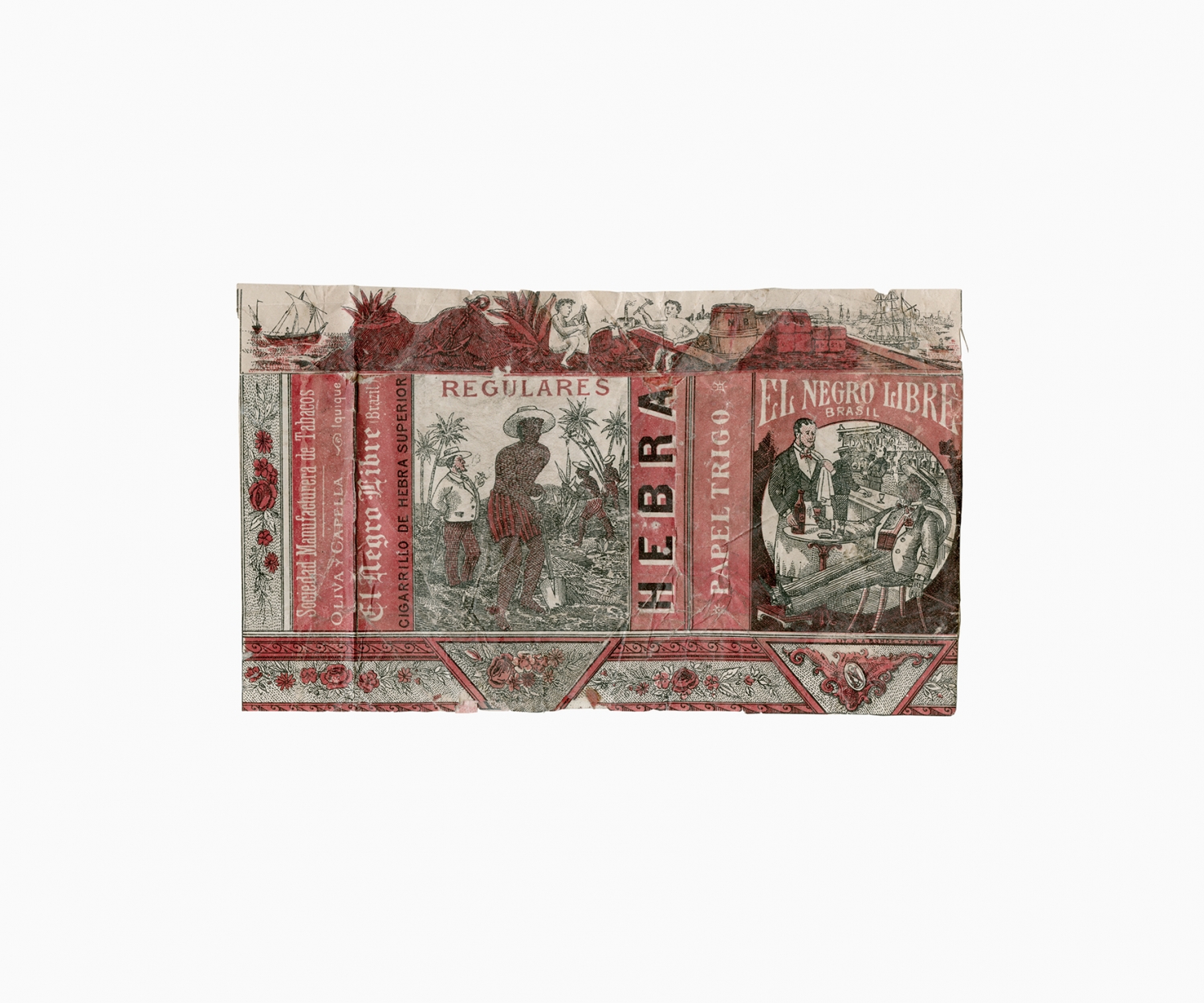Smoking tobacco was an important part of the social and working life of the nitrate worker. Like chewing coca leaves, smoking tobacco helped to endure the harsh working and living conditions in the Atacama Desert. Smoking and tobacco are recurrent subjects in oral histories, diaries and literary accounts of life in the desert. The following images are examples from a large collection of over six hundred used tobacco wrappers dating from the 'British nitrate era' (1870s to 1920s) that have been dug out from the rubbish dumps of abandoned nitrate towns in the Atacama Desert by Gjorgji Gjuranovic, an amateur historian and archaeologist from Iquique. This personal collection is an archive of the desert. Laid out in a grid, these few hundred tobacco wrappers configure a historical tapestry of the material life of the nitrate worker, preserved for more than a hundred years in the driest desert on Earth.
From the 1920s onwards Chilean nitrate production in the Atacama Desert became financially unsustainable, the factories began to close down and the desert towns were eventually abandoned. The closing of nitrate oficinas was followed by the dismantling and selling of their machinery, the metal and wood from their industrial and residential constructions and railway lines, bricks, pipes, glass panels and corrugated iron. Industrial sites were not left to crumble, but literally removed right down to their foundations. Whatever form, shape or structure may have been left standing, seen as worthless or an impossible task, was later demolished by earthquakes and by Pinochet's air force.
For years local enthusiasts of the desert, or of history, have made leisurely expeditions to the former industrial towns and settlements to excavate the rubbish dumps, searching for things of little value such as cutlery, crockery, tins, bits of machinery and tools, personal and industrial documents, clothes, pottery, and so on. These collections of fragments of discarded objects can give an idea of the everyday life in the desert nitrate towns, they can bring to the present some sense of the material history of the disappeared communities of nitrate workers. Such is the case with Gjorgji Gjuranovic's collection of used tobacco wrappers. These fragile fragments of paper contain images of historical figures, characters and celebrities of the time, as well as popular verses, riddles, jokes and anecdotes. They constituted a source of popular knowledge and had an important role in social life in those isolated workers’ communities. The meticulous and careful gathering and recovering of such discarded, fragile and ephemeral objects is a reminder of the social condition of the document, and the social and political value of collecting and collections. (1)
(1) Reproduced by permission of Gjorgji Gjuranovic; For literary references see the works by Hernán Rivera Letelier; To see installation photos of the presentation of the tobacco collection go to www.xavierribas.com
